My collection of open audio reels
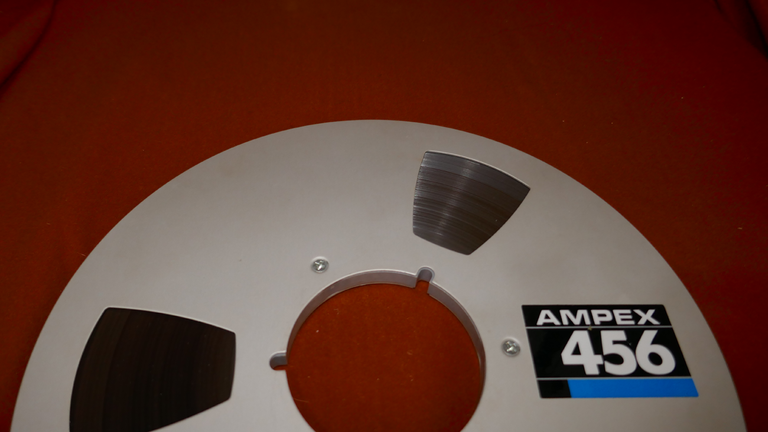
One of my hobbies and passions is everything related to good sound. Those vibrations that people like so much, that make our emotions fly, relax our soul and invite us to move our body.
My preference is audio for home use, reproduced by old equipment, by analog sources, where High Fidelity sound is the most important thing.
So, today I share with you my collection of open audio reels.
Of all the analog audio sources that were created, the one that offers the best sound quality is the open reel magnetic tape; created for the reproduction and recording of sound vibrations.
The genesis of these tapes dates back to 1927, when Austrian-German engineer Fritz Pfleumer added iron oxide, bonded with lacquer, to thin paper tapes.
Later, in 1935, the multinational chemical company BASF began using plastic tapes with ferromagnetic particles.
Over time, the materials used were improved to provide them with greater magnetic holding capacity and durability.
The initial use of this type of tape in Germany was in World War II, used for voice recording.
Not all tapes record sound with the same quality. That is why there are different types of tapes, depending on the materials they incorporate. Example: normal tape, chrome tape, among others.
Some of the brands of tapes in my collection are:
- Maxell, ORWO,TDK, BASF, Sony, AGFA, Ampex
Others:
- Technics, Tascam, Pioneer
Maxell
Hitachi Maxell, is a Japanese company that emerged in 1960. It has been dedicated to the manufacture of electronic products for mass use. Example, batteries, magnetic tapes and optical discs.
ORWO
German company based in Wolfen, which since 1964 has been engaged in the manufacture of film for photography, cinema and audio tapes.
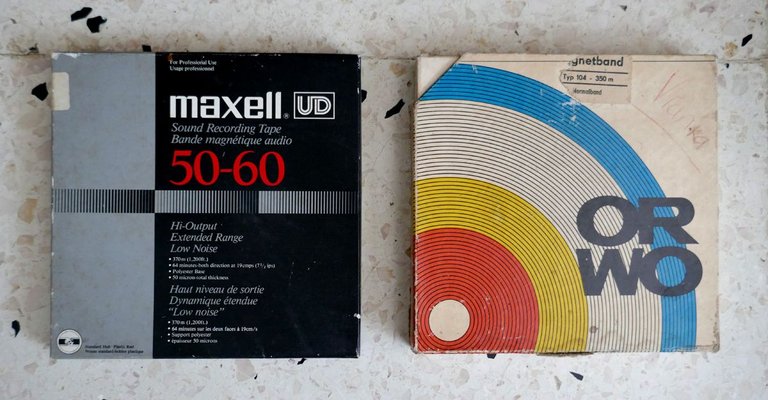
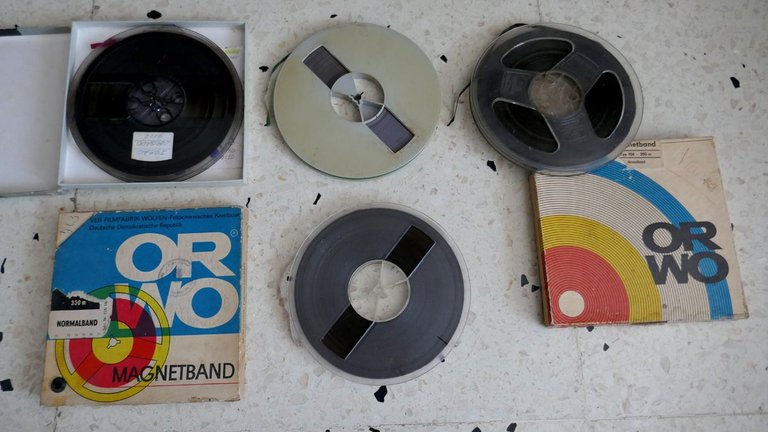
TDK
TDK Corporation, and in its early days TDK Electronics Co., Ltd. Japanese multinational founded in 1935, for the creation of electronic items, magnetic and optical media.
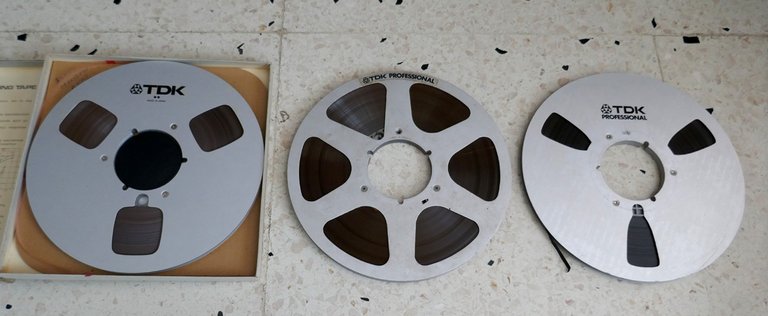
BASF
Multinational of German origin, created in 1865 in Ludwigshafen. Dedicated to the chemical industry, it began manufacturing pigments for jeans. Later, magnetic tapes for tape recorders, among other things.
Exhibited its first plastic tapes at the Radiotechnical Exhibition in Berlin in 1935.
He popularized the use of polyester-based tapes. This provided strength and prevented the tape from breaking due to stretching.
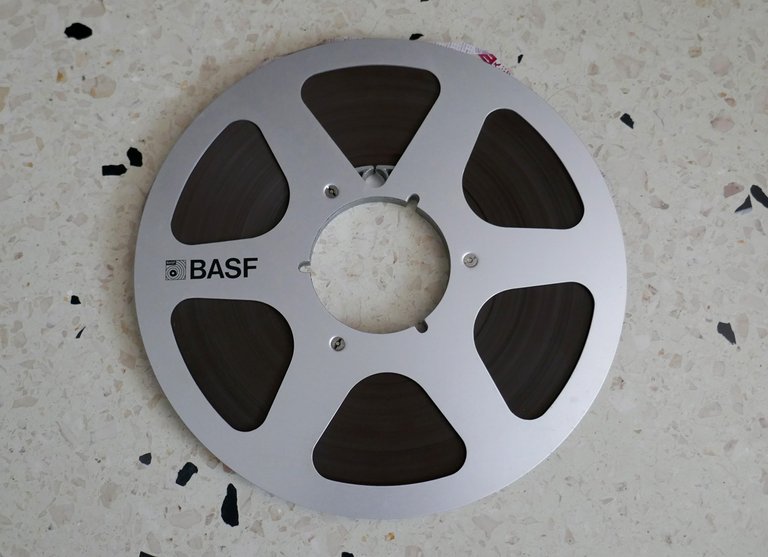
Types of reels according to their size:
Currently, the reels most commonly used by audiophiles are 7-inch reels, and preferably 10.5-inch reels.
Also, in portable tape recorders, small 3-inch reels were used, mainly for journalistic use.
In Germany, the 5-inch and 5.7-inch reels were frequently used.
The 10.5-inch coils, also made of metal, have a large central hole, to which we must attach it to the tape deck by means of a NAB Hub adapter, which can be made of plastic or metal.
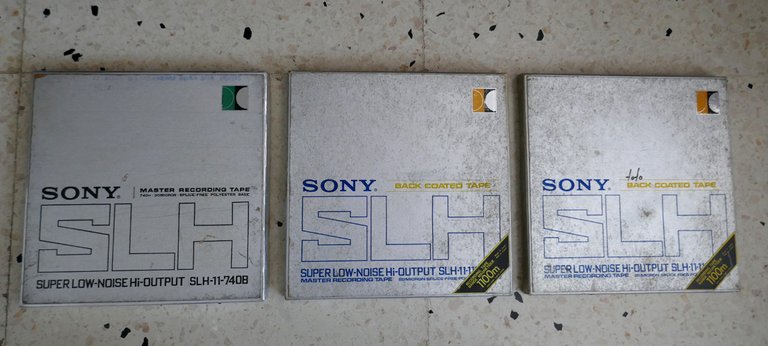
Sony
Japanese multinational company, founded in 1946, in Tokyo (Japan). World-renowned manufacturers of electronics: audio and video, photography, computers, video games, cellular telephony, etc.
AGFA
German company created in 1867, dedicated to the production of chemical compounds for photography, and later extended to magnetic tapes.

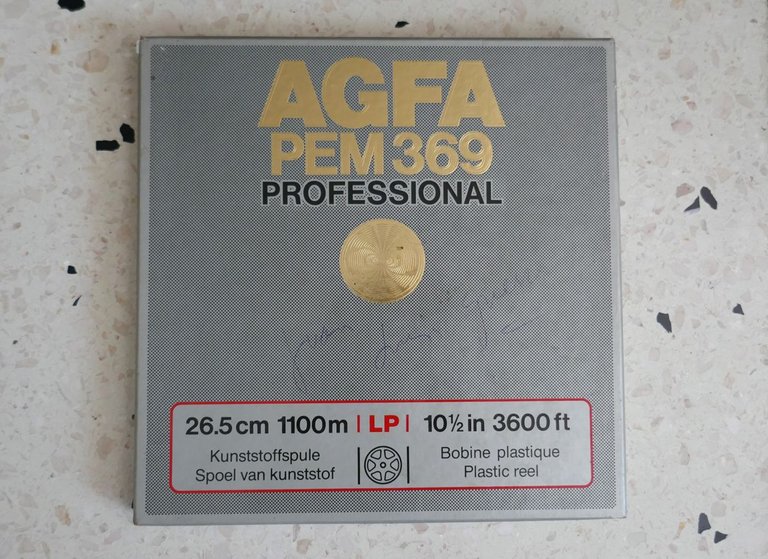
Ampex
American electronics company, founded in 1944.
In 1950, marketed one- and two-track tape recorders, with ¼-inch tapes. They used wider tapes in 3- and 4-track equipment.
By the end of 1959, Ampex tapes were in great demand around the world, by major recording studios.
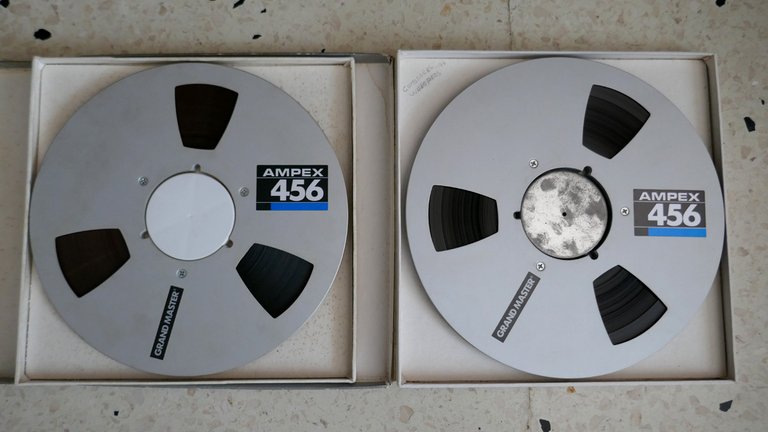
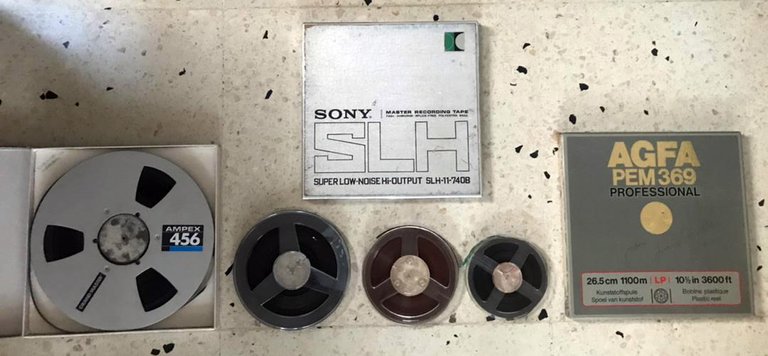 Most commonly used reel diameters: 10.5, 7, and 5 inches. But there are smaller and larger sizes
Most commonly used reel diameters: 10.5, 7, and 5 inches. But there are smaller and larger sizes
Friends, there are blank magnetic tapes and also factory engraved ones. Every day it costs more and more to acquire them in the market and their price is increasing.
Seeing these reels spinning, almost a century old, and feeling the music they deliver, is something magical and pleasurable. Therefore, they could not be missing in my favorite collections.
I wish you a nice Friday. Greetings from Havana.

Own photos. Camera: Panasonic Lumix model DMC-ZS100
Text divider. Free use from @eve66
Text by Andrés Brunet
Thank you for reading
Welcome your comments
Infinite greetings!
You are a man of details.
I already saw that iron and polyester are important elements here.
Brunet, and what music do you keep on those tapes? Maybe we can see a post in the Inspired Corner where mipiano moderates and posts a lot (by the way I thought I would post something over there today). Aquí le dejo el link: C/Q Inspired-by-Music
;)
Hi @nanixxx. Thanks for reading and giving me your lyrics.
On those tapes are recorded Cuban Nueva Trova songs and some Pop music in English.
I will take a tour of that channel where mipiano also writes to capture the essence of the community.
I wish you a nice weekend.
I knew it, but I wanted to hear it from you 😁/
Lots of details. Very cool of you. Me, I got to see them, but never got to hear them.
I know many like the way Vinyl sounds better compared to today's devices. I have some Vinyl and they certainly sounded great. I would like to listen to some of those Audio Reels to try to compare the qualities.
!LUV
@abrunet, @flquin(1/3) sent LUV. | connect | community | HiveWiki | NFT | <>< daily
! help(no space) to get help on Hive. InfoHi @flquin. Of all the analog audio sources, vinyl is very popular among audiophiles, because of the magic of handling an acetate record and the good sound they deliver. Of course, you'll always have the sound of Scratch because of the physical friction of the pickup needle grooving the record's groove.
But the reality is that it does not beat a professional recording recorded on open reel tapes with proper equipment that records at a higher speed, minimum 15ips.
Where the result is an audio as reliable as possible to the original recording, either in studio or live.
Precisely, vinyl records are made, from matrix recordings, from an open reel tape.
I would like that one day you listen to a well made recording, and the final result will be optimal if the whole audio chain has the quality and harmony between these. Thanks for writing. Regards
Wow. You are a real connoisseur of this world of music.
I understand and it does make a lot of sense to what you are saying. As there is not so much friction in the recording of the reel tapes and of course improving every time the techniques that exist, make the sounds are heard better.
And, of course, the friction deteriorates the vinyl, making the reproduction become distorted. Making the reel-to-reel tapes better again in the long run.
Thank you very much for the teaching.